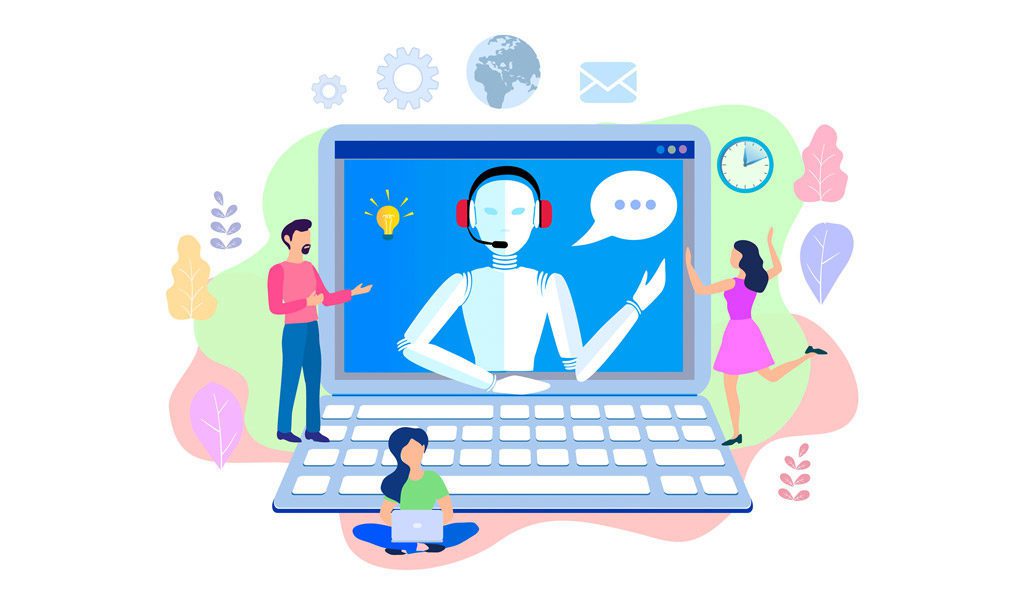Imagine you’re stuck in traffic on the way to the airport. You call your airline to see about getting on another flight but the hold time is expected to be 30 minutes. Frantic, you open the app and start a live chat. “I’m going to miss my flight. Do you have any seats on a flight from ATL to DEN”? The bot gets confused and says “Oops, I’m still learning.” You ask again in a different way: “I need to get to DEN tonight from ATL. What do you have?” The bot looks like it’s typing. You expect to see flight options. After a delay, the bot sends help desk articles related to cancellation fees. Frustrated, you now call back and wait on hold until you finally reach an agent.
This scenario plays out every day, across every industry. Bots that fail to resolve customer needs and result in frustration.
There have been significant advancements in deep learning and natural language understanding that can deliver on the promise of AI to make customer service more efficient and effortless. The most sophisticated AI-powered chatbots can now carry on human-lite conversations with customers. No longer constrained to a linear path, users can ask questions freely, bounce between thoughts, and pivot conversations. The smartest AI platforms can handle these omnichannel interactions with ease. This new era of customer service automation is enticing more companies to launch modern chatbots across channels to scale customer service efforts and reduce support costs.
When you’re adopting AI for customer support, there are five common pitfalls to avoid to ensure a positive customer experience.
- Not automating issues that have historical data: A person could ask an airline about baggage costs in hundreds of unique ways: How much does it cost for a piece of luggage? What’s the price of a bag? Do I get a free checked bag on my flight? Train an AI using past customer interactions to expand its ability to correctly classify the intent of a wider variety of utterances.
- Trying to behave like a human: Autonomous cars were not built to replicate human drivers. They have sensors and signals that empower them to drive safer and more efficiently than humans ever could. The same holds true with AI chatbots. Don’t build them to be human-like. Instead make the customer service interaction much more efficient and immediate than could ever be possible with a live agent. Companies try to make bots too human-like by adding in artificial delays to insinuate the bot is “thinking.” When AI’s underlying purpose is to get people the answers they want as fast as possible,. Silly human tricks are more likely to annoy customers than make them smile.
- Being too chatty: When people open a chat, they have an urgent need. Maybe they are tracking down a lost package, modifying a just-placed order or requesting a refund. With first-generation chatbots, we saw companies create bots that were very, very chatty. These bots would talk about the weather or tell a joke. The customer doesn’t want a friend: they want an issue resolved in the least amount of time and with as little friction as possible. So nix the chitchat in your AI bot, please.
- Not connecting with other systems: To provide self-service information to customers, companies have built out knowledge bases with articles and FAQs covering recurring topics and questions. Bots that point support seekers to a knowledge base article can frustrate customers. Rather, AI should resolve customer questions on an individual level. So, a traveler whose flight lands early doesn’t merely get general information about check-in time policies but is automatically checked-in to the hotel property where they are staying. AI Chatbots need to exchange information from other business systems to provide full resolutions and deflect tickets from live-agent channels.
- Not providing an easy out: Your customers always need to have an easy way to get passed to a human agent. There should be rules in place for immediate escalation if:
- A customer has a complex question or one that requires creative problem solving or a level of subjectivity
- The bot picks up on negative sentiment – frustration, anger
- The AI cannot understand what a person is saying
- The customer fits a specific profile: two might be high-value customers or those who have previously given the bot a poor rating after an interaction
Companies strive to design a conversational AI experience that quickly resolves a customer issue, and is engaging and efficient. A single unpleasant, unhelpful or tone-deaf interaction can impact how a person views an entire experience or a brand. By avoiding these common pitfalls, your support team will unlock the superpower of AI to delight customers with instant resolutions and a pleasant experience.
Source: Biggest Pitfalls with Customer Service AI…. And How to Avoid Them – Business 2 Community

